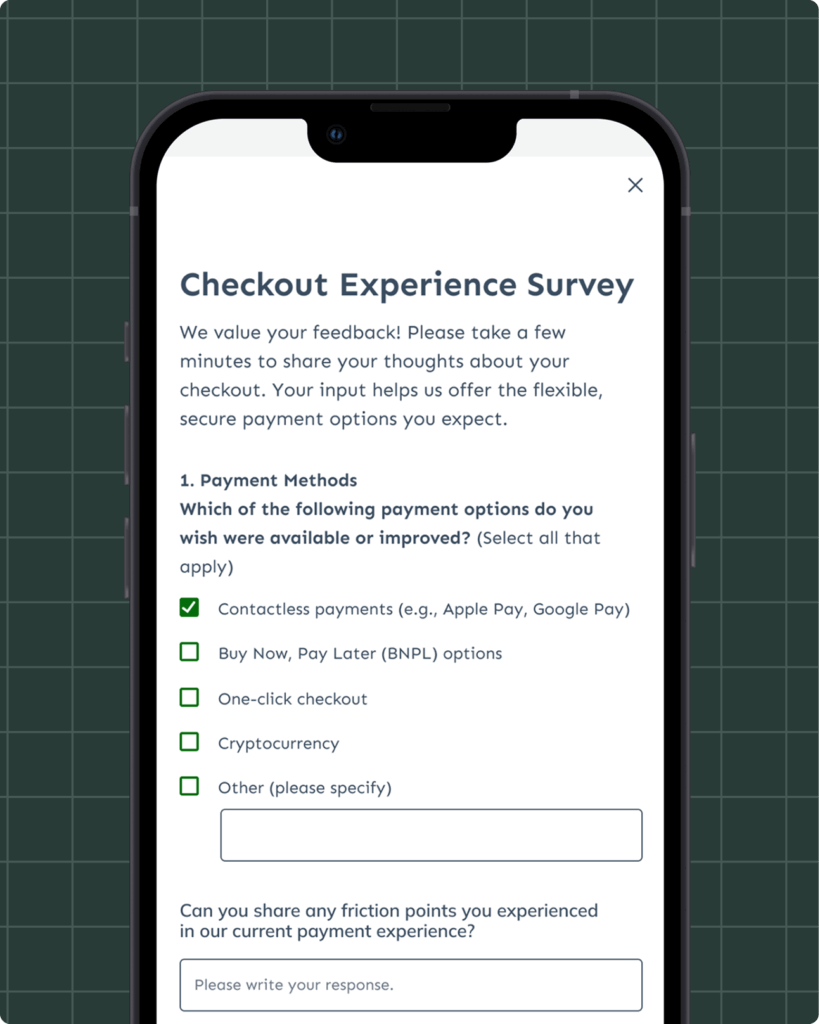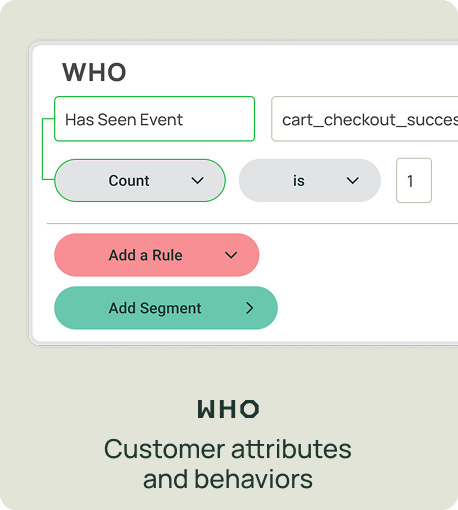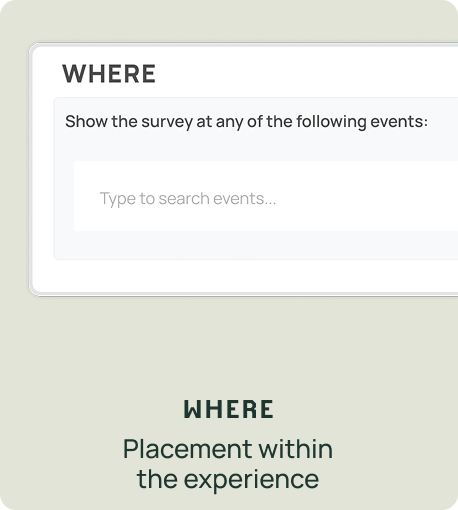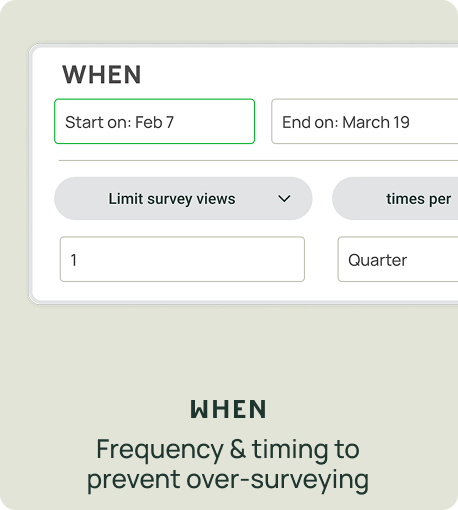Leveraging Feedback to Boost Sales, Enhance Loyalty, and Innovate Products

For retail brands, customer feedback comes from everywhere, online reviews, in-store interactions, social media, in-app feedback, and post-purchase surveys. Each touchpoint offers valuable insights, but without a way to connect the dots, retailers risk missing critical trends in customer sentiment and shopping behavior.
An integrated, omnichannel approach to customer feedback enables product teams to identify key customer preferences, customer experience teams to address issues proactively, and marketing teams to build brand loyalty.
In this guide, we’ll explore:
Let’s dive in!
Retailers interact with customers across numerous touchpoints, both online and in-person. To deliver seamless shopping experiences and build brand loyalty, retailers must leverage multiple feedback channels. A well-integrated, omnichannel approach helps businesses understand consumer preferences, improve service, and refine their product offerings.
Surveys provide structured, quantifiable data that retailers use to measure customer satisfaction, improve product offerings, and enhance store or website experiences. Whether post-purchase or part of loyalty programs, surveys give retailers actionable insights into consumer sentiment.
For brick-and-mortar stores, direct customer feedback through kiosks, QR codes, or associate-led interactions. helps retailers optimize in-store experiences, improve merchandising, and refine customer service strategies in real-time.
Embedded feedback tools on e-commerce sites and mobile apps help retailers identify pain points in the shopping journey, optimize navigation, and improve conversion rates. Understanding where customers struggle on a website leads to better online experiences and increased sales.
Retailers leverage chatbots and customer service chats to provide instant assistance while gathering insights on common concerns, product inquiries, and service gaps. These interactions are critical for identifying recurring issues and improving the overall shopping experience.
Social media comments, direct messages, and online reviews provide unfiltered insights into consumer perception and product sentiment. Retailers must actively monitor these platforms to manage reputation, engage with customers, and respond to feedback effectively.
For retailers with mobile shopping apps, app store reviews provide invaluable feedback on user experience, functionality, and performance. These reviews directly impact app store rankings and influence potential customers, making active review management essential for success.
The following scenarios highlight how retail brands listen to customers across multiple channels and use that feedback to solve business challenges. Specifically, they showcase how retailers:
Example Scenario 1
A national electronics retailer noticed a growing shift in how customers wanted to pay. Shoppers expected seamless, flexible payment options, including buy now, pay later (BNPL) services, contactless payments, and self-checkout for smaller items. But the retailer lacked clear data on which payment methods were most valuable to its customers.
Without structured feedback, the retailer faced the following challenges:
Without a consistent feedback strategy across branch locations, the credit risks missing critical issues that could impact retention and overall satisfaction.
The retailer used Alchemer’s multi-channel feedback capabilities to collect insights from customers at key payment touchpoints, ensuring they understood what mattered most to their customer base

Example Scenario 2
A home goods retailer needed deeper insights to guide their product innovation strategy. Despite conducting traditional market research, the retailer often found a disconnect between predicted product demand and actual consumer interest, resulting in inventory overstock and product line discontinuation.
The retailer implemented Alchemer’s omnichannel feedback platform and market research:
Alchemer provides powerful yet intuitive targeting features to ensure surveys and interactions reach the right customers at the right time and place.
Targeting is broken into three key areas:




Example Scenario 3
A nationwide fashion retailer noticed an increase in online cart abandonment and a drop in repeat purchases. Despite offering competitive pricing and fast shipping, customer loyalty was declining. Store managers also reported inconsistent feedback from in-store shoppers, some praised the experience, while others quietly took their business elsewhere.
Without clear insights into the post-purchase experience, the retailer faced major challenges:
The retailer developed a post-checkout feedback strategy using Alchemer to capture insights at key moments in the shopping journey.
Choosing the right customer feedback platform is a pivotal decision that will shape how your retail brand understands and responds to your customers. Purchasing a CX platform involves careful research and asking the right questions.
To get the most value from your investment, here are the key elements to consider:
A platform that allows you to collect feedback across multiple channels ensures you’re capturing customer sentiment wherever your users interact with your brand—whether through mobile apps, in-app surveys, website feedback, or social media. A unified feedback system boosts operational efficiency, reduces costs, and supports more informed decision-making.
While product features and integrations often steal the spotlight, the quality of customer support can make or break your experience with a new platform. Exceptional support ensures that your team stays confident, productive, and focused—not stuck in troubleshooting limbo.
A smooth and quick implementation process is essential for maximizing the potential of a new CX platform. Evaluate how simple it is to set up, integrate, and customize the platform to fit your company’s needs. Look for a user-friendly interface that minimizes the learning curve for your team. Also, consider the level of support the vendor provides during onboarding, training, and ongoing use.
Data security is crucial when handling sensitive customer information, such as personal data or payment details. Look for a platform with strong data security features that protect customer personal information. Transparent security protocols are important not only for legal compliance but also for preventing potential data breaches.
From e-commerce sites and in-store kiosks to mobile apps, chatbots, and social media, every interaction is a chance for retailers to listen, learn, and act on customer feedback. Without a unified feedback strategy, retail brands risk missing the key insights that drive satisfaction, loyalty, and long-term growth.
Choosing the right CX platform is essential. A solution like Alchemer empowers retail teams to capture, analyze, and respond to feedback in real time—whether it’s identifying why carts are abandoned, improving in-store experiences, or uncovering new product opportunities. With Alchemer, retailers can turn everyday interactions into decisions that delight customers and drive business success.
Alchemer has decades of experience helping brands turn feedback into action.
For retail brands, customer feedback comes from everywhere, online reviews, in-store interactions, social media, in-app feedback, and post-purchase surveys.

Quick-service restaurants (QSRs) are heading into 2026 hungry for growth, with revenue...

Customer feedback is one of the most underused growth tools in marketing....
Please provide your name and email to continue reading.